Right ascension 17 16 21.071 Apparent dimensions (V) 1″.6 Distance to Earth 18,260 light years Absolute magnitude -3 Apparent magnitude (V) 10.75 | Declination −59° 29′ 23.64″ Radius 0.08 ly ly Magnitude 10.75 | |
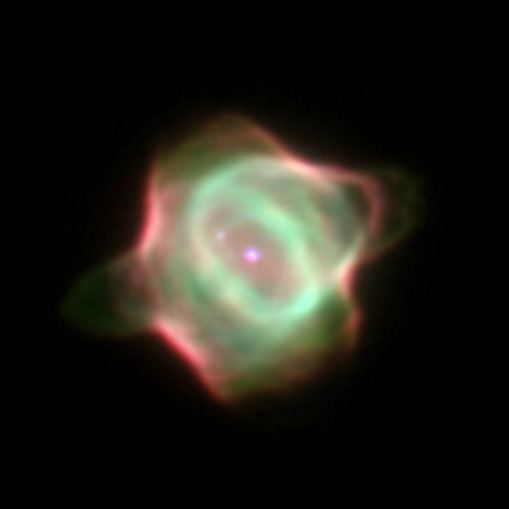 | ||
Designations PN G331.3-12.1,Hen 3-1357 Coordinates RA 17h 16m 21s | Dec -59° 29′ 24″ Similar Engraved Hourglass Nebula, Mz 3, IC 418, Little Ghost Nebula, Eskimo Nebula | ||
The Stingray Nebula (Hen 3-1357) is the youngest known planetary nebula (PN). (Bobrowsky 1994) The Stingray is located in the direction of the southern constellation Ara (the Altar), and is located 18,000 light-years away. Although it is some 130 times the size of the Solar System, the Stingray Nebula is only about 1/10 the size of most other known planetary nebulae. Forty years ago it was still a protoplanetary nebula in which the gas had not yet become hot and ionized. In a Nature article, Bobrowsky et al. described how the Hubble observations revealed a 17th-magnitude companion to the Stingray's 15th-magnitude central star. The image of the Stingray Nebula shown here shows how the outer shells of gas are collimating the continuing outflow of gas from the central star—an important observation, as the process of how these outflows become collimated has not been well understood.
Contents
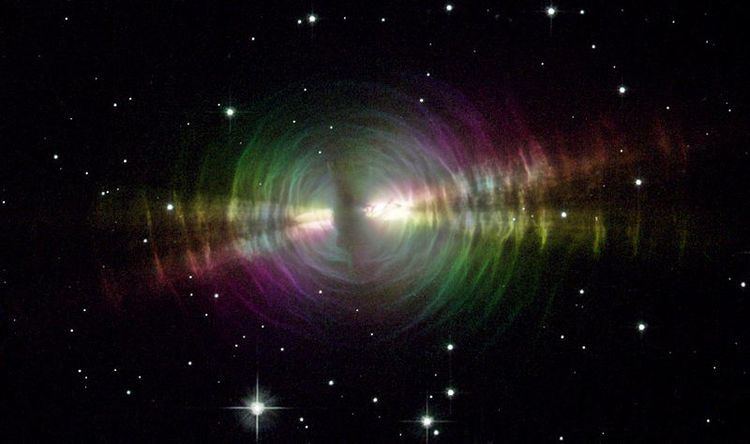
Ytpmv stingray nebula
History
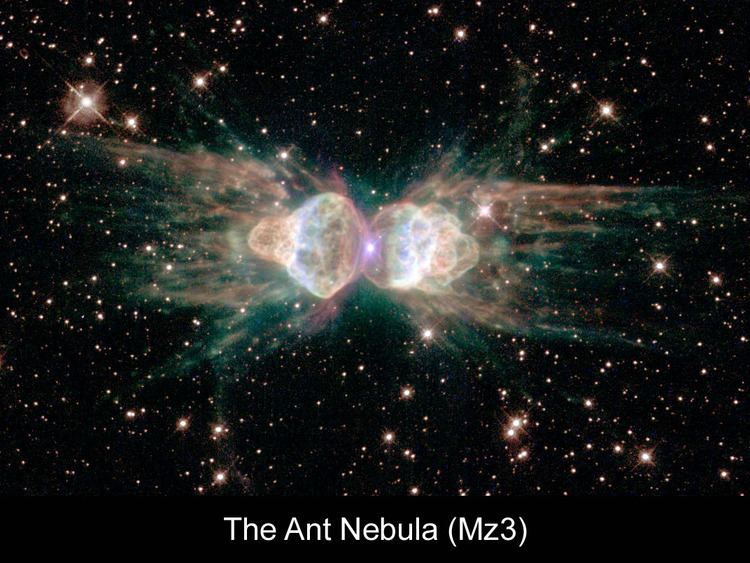
Prior to the discovery of the nebula, the central star of the Stingray Nebula was known as He3-1357, which Karl Gordon Henize classified as an A or B type Hα emission line star in 1967. It was observed in 1971 to be a pre-planetary nebula (PPNe) when it seemed to be an asymptotic giant branch (AGB) B1 supergiant. Planetary nebula (PN) emission lines were identified in this star in 1989 by the IUE (Parthasarathy et al. 1993). As the nebula would be newly formed and very small, ground-based observations were not able to resolve it; so Bobrowsky observed it with the Hubble Space Telescope, discovering the nebula, which he named the "Stingray Nebula."
Planetary nebula nucleus (PNN)
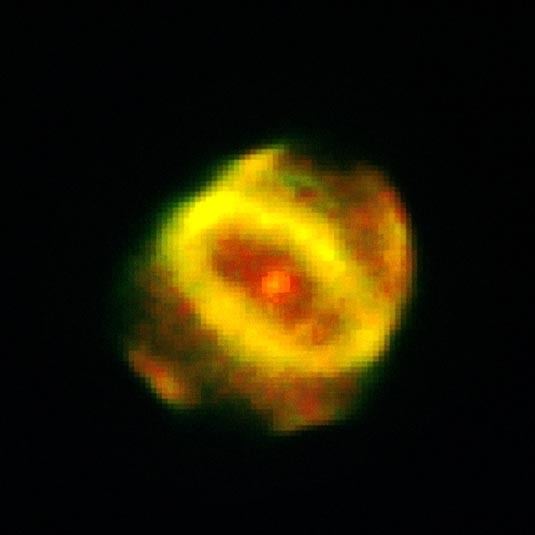
In 1995 the central planetary nebula nucleus (PNN) was observed as a DA white dwarf, having seemingly faded by a factor of three between 1987 and 1995. The PNN has an estimated mass of 0.6 M☉, and has an observed companion star separated by 0.3 arcsec. Nebula mass is estimated as 0.015 M☉.
Luminosity is estimated to be 3000 L☉. (Parthasarathy 2000)
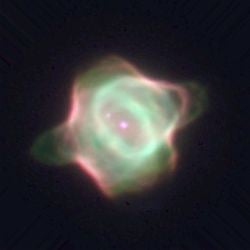
The central star is unusual in that it has brightened and faded over a period of 20 years. Its temperature went up by 40,000°C An explanation for this is that it has undergone a helium flash.

